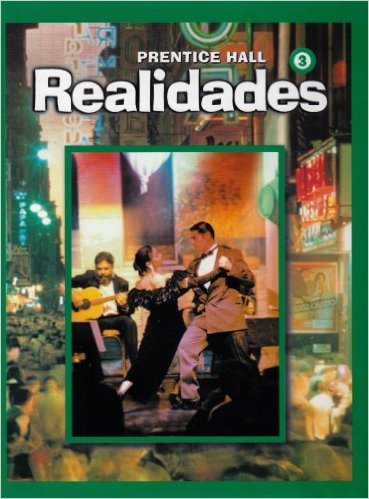
All Solutions
Page 135: Actividad 35
The subjunctive is also used with words like “ojalá”, “quizá”, after “que”, indicating a wish for something to happen or uncertainty that it is going to happen. Some other uses of the subjunctive are with emotions and feelings, wishes, doubt, hypothesis, etc.
As we mentioned, the subjunctive is also used with wishes, since in the second sentence we have “quieren que” we know that the subjunctive is used. The verb that would suit the best for this sentence is “decir”. Since the speaker is using the “yo” form, we will use the first person singular subjunctive form of the verb “decir” (diga).
The subjunctive is also used with words like “ojalá”, “quizá”, after “que”, indicating a wish for something to happen or uncertainty that it is going to happen. Some other uses of the subjunctive are with emotions and feelings, wishes, doubt, hypothesis, etc.
As we mentioned, the subjunctive is also used after most expressions with “que”. Since in the second sentence we have “exigen que”, we know that the subjunctive is used. The verb that would suit the best for this sentence is “llegar”. Since the speaker is using the “yo” form, we will use the first person singular subjunctive form of the verb “llegar” (llegue).
The subjunctive is also used with words like “ojalá”, “quizá”, after “que”, indicating a wish for something to happen or uncertainty that it is going to happen. Some other uses of the subjunctive are with emotions and feelings, wishes, doubt, hypothesis, etc.
As we mentioned, the subjunctive is also used after most expressions with “que”. Since in the sentence we have “aconsejo que”, we know that the subjunctive is used. The verb that would suit the best for this sentence is “relajarse”. Since the subject is “tú” (te), we will use the second person singular subjunctive form of the verb “relajarse” (te relajes).
The subjunctive is also used with words like “ojalá”, “quizá”, after “que”, indicating a wish for something to happen or uncertainty that it is going to happen. Some other uses of the subjunctive are with emotions and feelings, wishes, doubt, hypothesis, etc.
As we mentioned, the subjunctive is also used after most expressions with “que”. Since in the sentence we have “importante que”, we know that the subjunctive is used. The verb that would suit the best for this sentence is “hacer”. Since the subject is “tú”, we will use the second person singular subjunctive form of the verb “hacer” (hagas).
The subjunctive is also used with words like “ojalá”, “quizá”, after “que”, indicating a wish for something to happen or uncertainty that it is going to happen. Some other uses of the subjunctive are with emotions and feelings, wishes, doubt, hypothesis, etc.
As we mentioned, the subjunctive is also used after most expressions with “que”. Since in the sentence we have “quieren que”, we know that the subjunctive is used. The verb that would suit the best for this sentence is “estar”. Since the subject is “tú”, we will use the second person singular subjunctive form of the verb “estar” (estés).
The subjunctive is also used with words like “ojalá”, “quizá”, after “que”, indicating a wish for something to happen or uncertainty that it is going to happen. Some other uses of the subjunctive are with emotions and feelings, wishes, doubt, hypothesis, etc.
As we mentioned, the subjunctive is also used after most expressions with “que”. Since in the sentence we have “necesario que”, we know that the subjunctive is used. The verb that would suit the best for this sentence is “ser”. Since the subject is “tú”, we will use the second person singular subjunctive form of the verb “ser” (seas).
The subjunctive is also used with words like “ojalá”, “quizá”, after “que”, indicating a wish for something to happen or uncertainty that it is going to happen. Some other uses of the subjunctive are with emotions and feelings, wishes, doubt, hypothesis, etc.
As we mentioned, the subjunctive is also used after most expressions with “que”. Since in the sentence we have “bueno que”, we know that the subjunctive is used. The verb that would suit the best for this sentence is “haber”. We will use the third person singular subjunctive form of the verb “haber” (haya).
The subjunctive is also used with words like “ojalá”, “quizá”, after “que”, indicating a wish for something to happen or uncertainty that it is going to happen. Some other uses of the subjunctive are with emotions and feelings, wishes, doubt, hypothesis, etc.
As we mentioned, the subjunctive is also used after most expressions with “que”. Since in the sentence we have “recomiendo que”, we know that the subjunctive is used. The verb that would suit the best for this sentence is “darse”. Since the subject is “tú” (te), we will use the secon person singular subjunctive form of the verb “darse” (te des).

